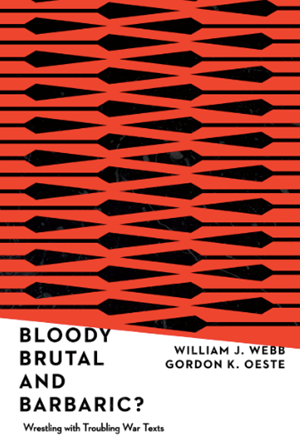Ancient War Atrocities, Now Compared to the Bible's

To understand a statement today, whether one listens to a politician, a medical specialist, a journalist, a theologian, a parent, a neighborhood member, requires context.
Context, context, context.
The Ancient Near East (=ANE) is known for its horrific wars and war atrocities, and in William Webb and Gordon Oeste’s excellent book, Bloody, Brutal, and Barbaric? Wresting with Troubling War Texts, the authors sketch in enough detail (probably not too much, for some too much) ANE war atrocities, and here they are:
Over the years we have collected many ancient portraits and inscriptions of war atrocities for use in educationalsettings. The emotive impact is greater when one sees these war atrocities preserved in graphic visual renderings combined with verbal commentary. Contemplating the artistic renderings of what happened in the list of ANE war atrocities is unforgettably jarring. Many ancient battles included a range of the following inhumane and grotesque actions:

They sketch with textual support each of the following 13 war atrocities:
- stripping captives naked and parading them with shaved genitals
- excruciatingly painful rope bindings that dislocated and shattered joints
- mutilating (often live) captives-cutting off the tongue, toes, noses,genitals, hands, feet, legs, head, and more
- blinding prisoners
- displaying body parts-stacking piles of heads at the city gate or piling up hands and penises
- capturing whole communities and selling them on the slave market
- no burial of the dead
- digging up ancestral graves and scattering the bones
- forcing captives to grind up ancestral bones
- raping women and young girls as part of the battle conquest
- slicing open pregnant women and killing the unborn
- impaling live victims on stakes pushed through their bodies
- flaying alive-cutting/peeling the skin from live captives staked to the ground
Which now leads to one of the most important sections in this book, pondering now if this ANE war atrocity sketch describes what Israel did and what YHWH commanded Israel to do:
While unpleasant to refiect on, an accurate picture of the grisly nature of ancient war is important for reading the biblical war texts. The war atrocities above are either explicitly or implicitly denounced within the biblical text. Unlike the praise and glory given these acts of extreme violence by gods, artwork, and annals, such war crimes were not considered Yahweh-approved war actions for Israel.
Was it or was it not Israelite? No. What does that mean for our reading of these texts in context?
If the biblical or Yahweh-approved war actions by lsraelite soldiers did not include either (1) the above list of ANE war atrocities or (2) the total-kill elimination the Canaanites, as argued in several previous chapters, then Israel’s war measures would have been considered mild or comparatively moderate within its larger ancient context. Repugnant as the biblical war texts are for modern readers (we cannot escape our ingrained Hague/Geneva horizon), they were markedly restrained in their day. To put it another way, the clear movement away from well-known war atrocities of the ancient world betrays significant incremental movement in a good, redemptive direction. Unlike many in the ancient world, the biblical writers viewed the above war atrocities as a list of shameful war actions and not something to be proud of. This incrementally redemptive war ideology within Scripture, as read within the social context ofits day, advances a greater respect and dignity even for one's enemies on the battlefield.
Where does this leave us? Still repugnant? Yes. As repugnant as other ANE texts? No. Does that matter? What do you think?
Jesus Creed is a part of CT's
Blog Forum. Support the work of CT.
Subscribe and get one year free.
The views of the blogger do not necessarily reflect those of Christianity Today.


















